Low-light photography has been a struggle for photographers since the beginning; however, new technology has made what was once challenging easier than ever before.
Ask any photographer, especially event photographers, what their biggest fear is, and there’s a good chance you’ll hear them say poor lighting conditions. I can recall many events I have been hired to shoot, only to arrive and see my worst fears come true. It was never a great feeling. Believe it or not, it wasn’t too long ago that shooting above ISO 1600 would render barely usable images. My, how times have changed.
Not only can modern cameras shoot at ISO 6400 all day long without problems, but many cameras can shoot beyond ISO 6400 and still produce clean, clear, sharp images that show little color noise. So now, with certain cameras, one can go out, crank the ISO dial and not break a sweat. What a time it is to be a photographer.
In this roundup, we’ll take a quick look at five cameras that have impressed me to no end when it comes to low-light photography. I have used all the cameras listed below and have been impressed with their high ISO performance. So, if you need a camera for low-light photography, check out the options below.
Panasonic Lumix S5 — ISO 12,800? No problem!
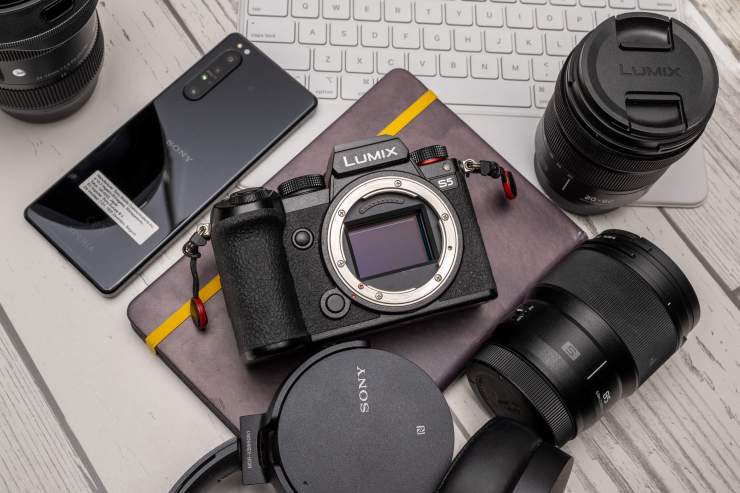
The full-frame Panasonic Lumix S5 is one of the best cameras you can buy for low-light photography. It also just happens to be very budget-friendly. This 24-megapixel full-frame camera is smaller than some Micro Four Thirds cameras. However, the Lumix S5 boasts huge performance, especially when it comes to high ISOs. I have no problem shooting this camera at ISO 12,800 and handing the images to my clients. The low-light performance can be attributed to the dual native ISOs that the camera uses.
Despite being contrast autofocus only, the autofocus system is speedy and accurate, even in low light. I have captured many subjects in near darkness with no problems. The IBIS in the Lumix S5 is fantastic, and the build quality is also excellent. I’ve used this camera in torrential downpours and the cold, and it never missed a beat. The battery life in the S5 is excellent, and the menu system is user-friendly. Add class-leading 4K video, a fully articulating screen, dual card slots and excellent ergonomics, and you have a camera that will serve you well in all situations. You can see high ISO image samples in our full review here.
CHECK THE LATEST PRICES AND AVAILABILITY HERE
Pentax K-3 III — Pentax’s high ISO claims are not just marketing copy
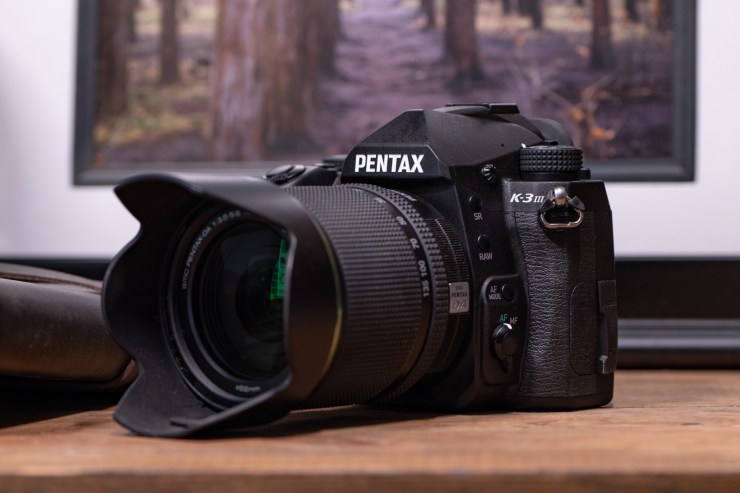
Yes, it’s a DSLR; get over it. Believe it or not, DSLRs are still relevant. It’s why Pentax went all out with the K-3 III. Many scoffed at Pentax’s claim that this camera was a low-light photography monster, but Pentax wasn’t lying. As you can see in our full review, you can crank the ISO of this camera to nuclear levels and still get incredible results. Shooting at ISO 25,600 is a piece of cake for this camera.
The Pentax K-3 III features a 25.7-megapixel APS-C sensor, five-axis IBIS, a lightning-fast autofocus system, incredible amounts of weather sealing, a responsive touch screen, fantastic ergonomics, a self-leveling sensor, a digital moire filter, dual card slots and a gorgeous 100% coverage Pentaprism viewfinder. All of these features combine to make the Pentax K-3 III one of the best cameras for low-light photography on the market.
CHECK THE LATEST PRICES AND AVAILABILITY HERE
Canon EOS R6 — A new standard for low-light photography
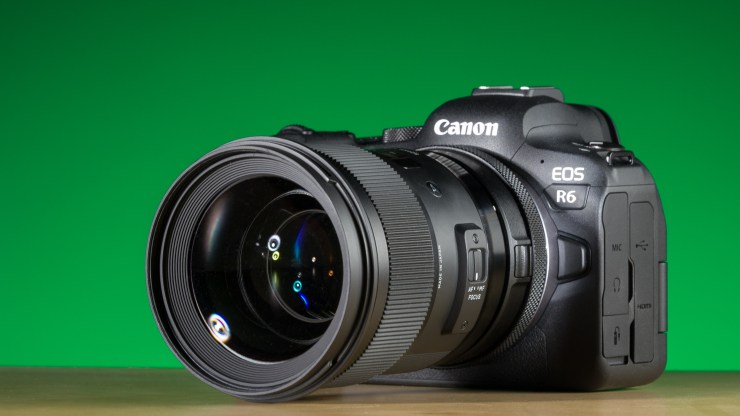
I’m not sure what kind of magic Canon used on the EOS R6, but it worked. This camera made my jaw hit the floor the first time I cranked the ISO up. ISO 6400 is beyond clean. You’ll get the same results at ISO 8000 and ISO 12800. Heck, even images at ISO 25,600 are more than acceptable. This is partly because the 20-megapixel sensor that Canon used in this camera has larger photosites than sensors with more megapixels. This means each pixel can receive more light, so noise is well controlled.
The modest-sounding 20-megapixel sensor shouldn’t put you off this camera. The Canon EOS R6 can capture lots of detail and provides a great dynamic range. There are dual card slots, an articulating screen, the best menu system of any camera system, and it’s built well. For the price, it’s one of the best cameras for low-light photography. Here’s our review.
CHECK THE LATEST PRICES AND AVAILABILITY HERE
Fujifilm X-T4 — A solid X-Trans camera for low-light photography
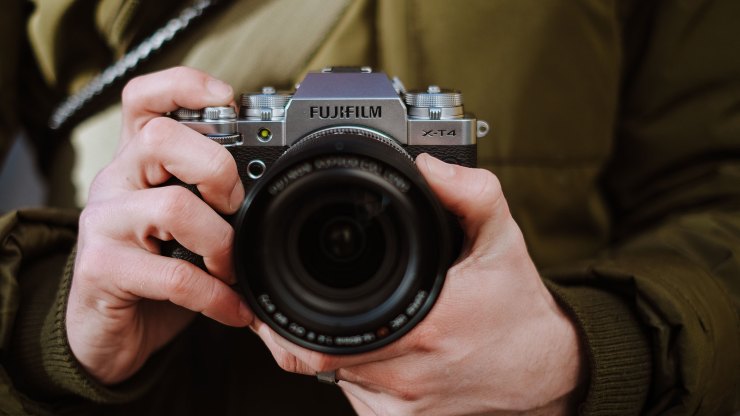
The X-Trans sensors that Fujifilm has used in their cameras haven’t always been great performers in low light; however, this changed with the Fujifilm X-T4. The fourth generation X-Trans sensor and image processor finally delivered high ISO results at ISO 6400 and above, that were more than satisfactory. I have used the X-T4, and other Fujifilm cameras with the same sensor and image processor combo, like the X Pro 3, at high ISOs, and I’ve never worried about the results I would get.
In addition to excellent low-light performance, the X-T4 features IBIS, and it works beautifully. The X-T4 has two card slots, a fully articulating screen, improved battery life, the gorgeous Fujifilm sims we’ve all come to love, enhanced weather sealing, and improved autofocus over previous models. The Fujifilm X-T4 is a camera that will help you get the shot no matter how high you have to crank the ISO. Read our review.
CHECK THE LATEST PRICES AND AVAILABILITY HERE
Nikon Z 6 II — Crank the ISO dial and be happy
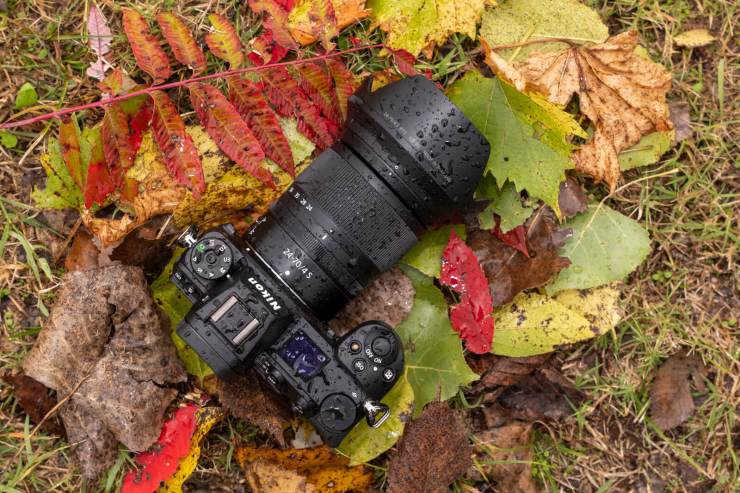
The Z 6 II is another fantastic camera for low-light photography. Before I got my hands on the Z 6 II, I had only used the Nikon Z 50 from the company’s mirrorless lineup. The Z 50 blew my mind when it came to high ISO performance. I never imagined that Nikon would be able to bring that performance over to the Nikon Z 6 II, but by golly, they did. You can shoot up to and beyond ISO 12800 without worrying about your images. You can see for yourself in our full review.
The Nikon Z 6 II features a 24.5-megapixel BSI (back side illuminated) sensor and dual EXPEED 6 image processors. This combo gives the camera a performance boost over the original Z 6. As a result, purchasers can expect a much-improved 273-point autofocus system. In addition, the camera features 5-axis image stabilization and two card slots, including one CFexpress slot. A large 3.2-inch LCD and the 3.6-million dot EVF make using the camera easy, while plenty of weather sealing will allow you to use the camera when the going gets tough. This camera is a no-brainer for low-light photography.
CHECK THE LATEST PRICES AND AVAILABILITY HERE
Tell your story with the second annual Visual Storytelling Conference!
Experience four days of interactive, online training sessions featuring a range of educational content with experienced photographers and content creators. This free event kicks off with a series of technical boot camps to build essential skills, followed by live, online sessions on photography, video, business and social media. Join live from March 10-13, 2022!
